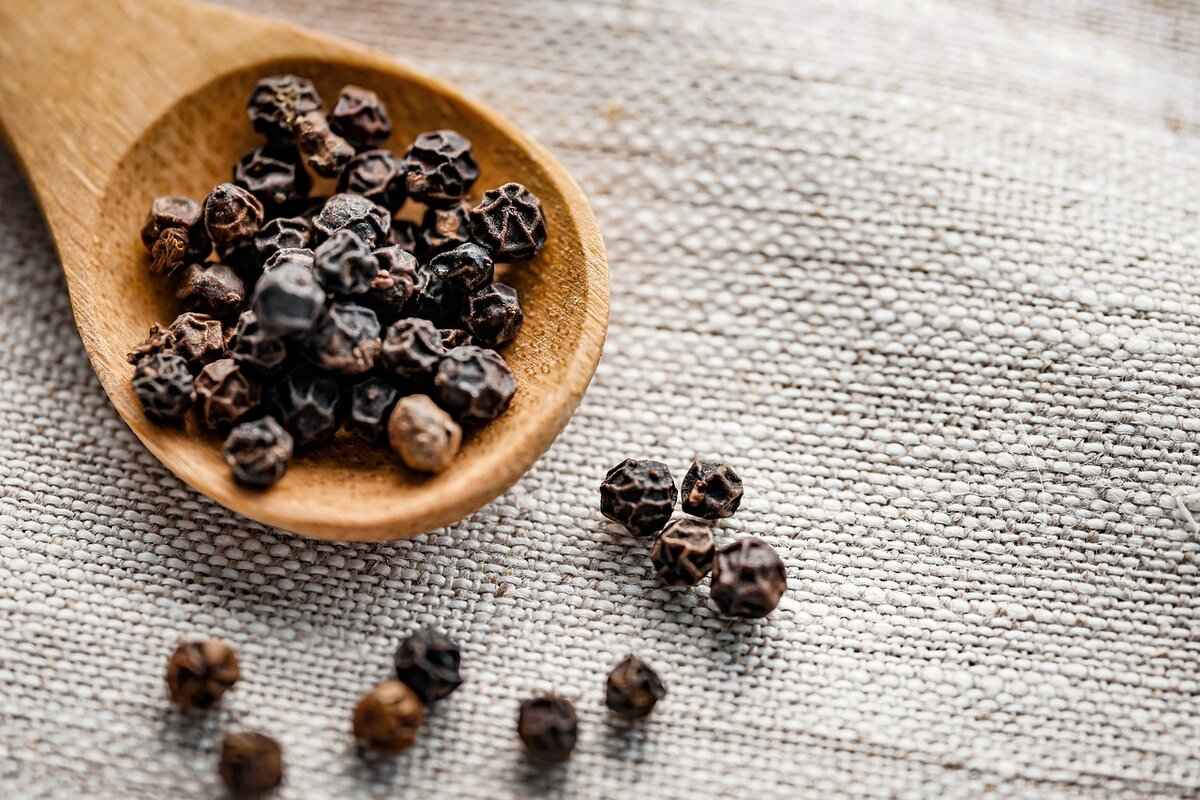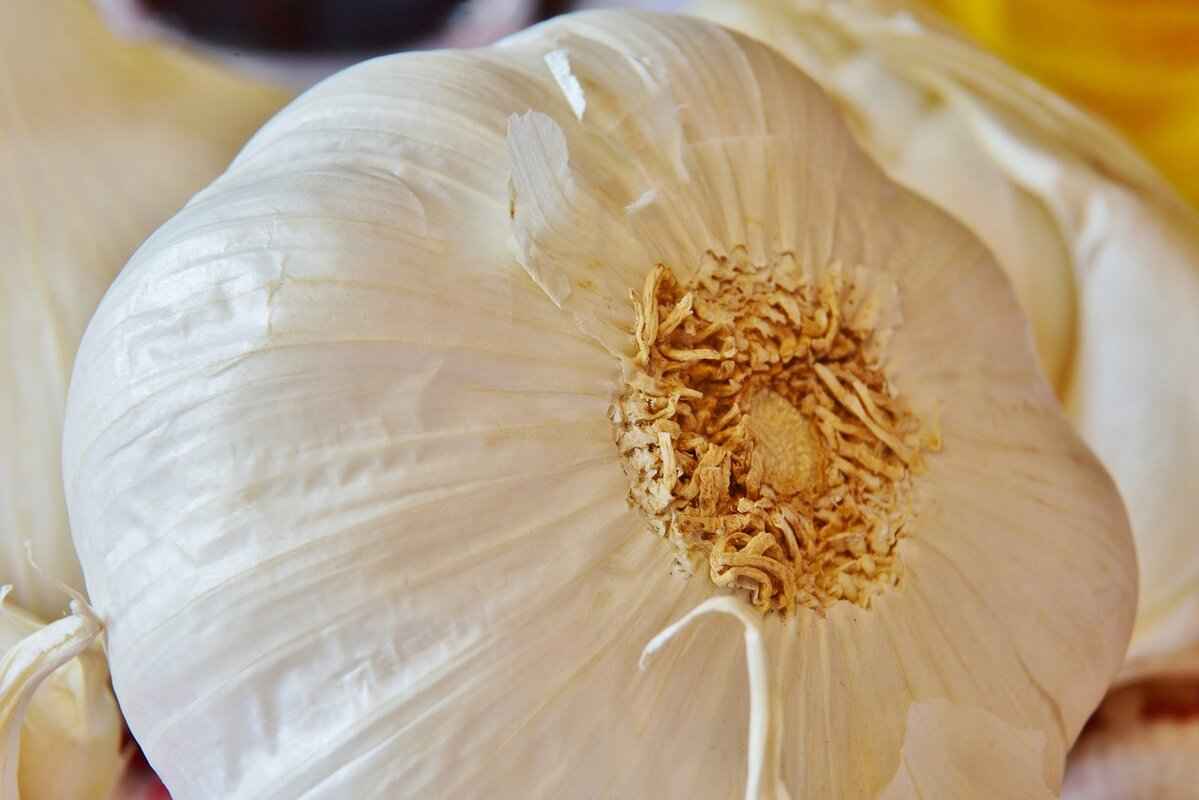This article delves into the essential spices and seasonings that define Asian cooking, emphasizing their unique flavors, health benefits, and cultural significance across various Asian countries. The diversity of spices used in Asian cuisine not only enhances the taste of dishes but also reflects the rich heritage and culinary traditions of the region.
Asian cooking is characterized by a rich array of spices, each contributing distinct flavors. Common spices include ginger, garlic, and turmeric, which form the foundation of many dishes. These spices are often combined to create a harmonious balance that is both aromatic and flavorful.
The interplay of spices in Asian cooking creates complex flavor profiles. Techniques such as layering flavors and balancing heat with sweetness are essential in crafting authentic dishes. For example, the use of chili peppers alongside coconut milk can create a delightful contrast that tantalizes the taste buds.
Umami, often described as a savory taste, is a fundamental aspect of Asian cuisine. Ingredients like soy sauce and fish sauce are rich in umami, providing depth and richness to dishes. Recognizing its role can enhance your cooking and appreciation of Asian flavors.
Fermented foods such as miso and kimchi are not only rich in umami but also provide health benefits, including probiotics that aid digestion. These ingredients add complexity to dishes and are staples in many Asian households.
Different Asian regions utilize spices uniquely, influenced by local ingredients and traditions. For instance, the use of curry powder in Indian cuisine contrasts sharply with the fresh herbs and spices common in Thai cooking. Understanding these variations can enrich your culinary experience and appreciation for the diversity of Asian cuisine.
Many spices used in Asian cooking offer significant health benefits, including anti-inflammatory and antioxidant properties. Incorporating these spices can enhance both flavor and wellness. For example, turmeric is celebrated for its anti-inflammatory properties, while ginger is known for its digestive benefits.
Dashi, a Japanese broth made from kombu and bonito flakes, is a cornerstone of many recipes. Its umami-rich profile adds essential depth to soups and stews, making it a vital ingredient in Japanese cuisine.
Proper storage and usage of spices are crucial for maintaining their potency and flavor. Storing spices in airtight containers away from light and heat preserves their flavor. Regularly checking for freshness ensures optimal taste in your dishes.
Seasonings like soy sauce, fish sauce, and sesame oil are vital in Asian cooking. They enhance the flavors of spices and contribute to the overall taste profile of dishes. For instance, soy sauce adds saltiness and depth, while sesame oil provides a nutty aroma that elevates various dishes.
Whole spices tend to retain flavor longer than ground ones. Learning when to use whole spices versus ground can enhance your cooking techniques. For example, toasting whole spices before grinding them can release essential oils, intensifying their flavor.
By understanding the essential spices and seasonings in Asian cooking, you can elevate your culinary skills and create dishes that are not only delicious but also reflect the rich cultural tapestry of Asia.

What Are the Key Spices in Asian Cuisine?
Asian cuisine is renowned for its vibrant flavors and aromatic dishes, largely attributed to the diverse spices that are used in cooking. Each spice brings its own unique character, enhancing the overall taste and appeal of the dishes. Understanding the key spices in Asian cuisine is essential for anyone looking to explore this culinary world.
Asian cooking is characterized by a rich array of spices, each contributing distinct flavors. Some of the most common spices include:
- Ginger: A staple in many Asian dishes, ginger adds warmth and a hint of spice. It is widely recognized for its digestive benefits and is often used in stir-fries, soups, and marinades.
- Garlic: Known for its pungent aroma and flavor, garlic is a fundamental ingredient in various Asian cuisines. It enhances the taste of dishes and is often used in sauces, dressings, and as a base for many recipes.
- Turmeric: This vibrant yellow spice is famous for its anti-inflammatory properties. Commonly found in curries, turmeric not only adds color but also a warm, earthy flavor.
- Coriander: Both the seeds and fresh leaves (cilantro) are used in Asian cooking. Coriander seeds provide a citrusy, nutty flavor, while the fresh leaves add brightness to dishes.
- Cumin: Often used in Indian and Middle Eastern dishes, cumin adds a warm, earthy flavor that complements many spice blends.
- Chili Peppers: Available in various forms, from fresh to dried and powdered, chili peppers bring heat and depth to dishes. Their flavor can range from mild to intensely spicy.
The interplay of these spices creates complex flavor profiles that define Asian cuisine. Techniques such as layering flavors and balancing heat with sweetness are essential in crafting authentic dishes.
In Asian cooking, spices are not merely ingredients; they are the essence of the dishes. The careful combination of spices can transform a simple meal into a culinary masterpiece. For instance, the sweetness of coconut milk can balance the heat of chili peppers, while the acidity of lime can enhance the earthiness of cumin. This balance is key to achieving the harmonious flavors that Asian cuisine is celebrated for.
Umami, often described as a savory taste, plays a crucial role in Asian cooking. Ingredients like soy sauce and fish sauce are rich in umami and are frequently used to elevate the flavor of dishes. Understanding umami can significantly enhance your cooking and appreciation of Asian flavors.
Many spices used in Asian cooking are not only flavorful but also offer significant health benefits. For example, turmeric is celebrated for its anti-inflammatory properties, while ginger is known for aiding digestion and combating nausea. Incorporating these spices into your meals can enhance both flavor and wellness.
Proper storage and usage of spices are crucial for maintaining their potency and flavor. Storing spices in airtight containers away from light and heat can preserve their freshness. Additionally, using whole spices rather than ground ones can enhance the flavor of your dishes, as whole spices tend to retain their flavor longer.
By understanding and utilizing these key spices, anyone can elevate their cooking and fully experience the rich tapestry of flavors that Asian cuisine has to offer.

How Do Spices Influence Flavor Profiles?
In the vibrant world of Asian cuisine, spices play a pivotal role in creating dishes that are not only delicious but also rich in cultural heritage. The intricate interplay of various spices is what gives Asian cooking its distinctive and complex flavor profiles. This article delves into how spices influence these flavors, focusing on techniques such as layering and balancing.
Spices are the heart of Asian cooking, each contributing unique characteristics to a dish. For instance, ginger adds warmth, while coriander brings a citrusy note. The magic lies in the ability to combine these spices in a way that enhances the overall taste experience. By understanding the roles of different spices, cooks can elevate their culinary creations.
- Layering Flavors: This technique involves adding spices at different stages of cooking. For example, sautéing garlic and onions before adding spices allows their flavors to meld together, creating a more robust base.
- Balancing Heat with Sweetness: Many Asian dishes expertly balance spicy and sweet elements. For instance, the heat from chili peppers can be countered with the sweetness of coconut milk or palm sugar, resulting in a harmonious flavor.
Umami, often referred to as the fifth taste, is a key component in many Asian dishes. Ingredients such as soy sauce, miso, and fish sauce are rich in umami, providing depth and richness. Understanding how to incorporate these ingredients can significantly enhance the flavor complexity of your meals.
Different regions across Asia have their own unique spice profiles influenced by local ingredients and culinary traditions. For instance, Indian cuisine is known for its bold use of spices like cumin and cardamom, while Thai cuisine often balances sweet, sour, and spicy flavors through the use of lemongrass and fish sauce. Understanding these regional variations can greatly enhance your culinary repertoire.
Many spices used in Asian cooking not only add flavor but also offer significant health benefits. For example, turmeric is renowned for its anti-inflammatory properties, while ginger is effective in aiding digestion. Incorporating these spices into your diet can promote overall wellness while enhancing the flavors of your dishes.
- Start with Fresh Spices: Always use fresh spices for the best flavor. Whole spices tend to retain their potency longer than ground spices.
- Experiment with Combinations: Don’t be afraid to mix and match spices. Finding the right combinations can lead to exciting new flavors.
- Proper Storage: Store spices in airtight containers away from light and heat to maintain their freshness and potency.
In conclusion, the influence of spices on flavor profiles in Asian cooking is profound and multifaceted. By mastering the techniques of layering flavors and balancing heat with sweetness, anyone can create authentic and delicious dishes that reflect the rich tapestry of Asian culinary traditions.
Understanding Umami: The Fifth Taste
Umami, often referred to as the fifth taste, plays a pivotal role in the culinary landscape of Asian cuisine. This savory flavor, which translates to “deliciousness” in Japanese, is integral to creating the depth and richness that characterize many traditional dishes. Understanding umami can significantly enhance both your cooking and appreciation of Asian flavors.
Umami is primarily derived from specific ingredients that are staples in Asian cooking. Common sources include:
- Soy Sauce: A fermented condiment made from soybeans, soy sauce adds a salty and savory flavor to dishes.
- Fish Sauce: Made from fermented fish, this sauce is a key ingredient in many Southeast Asian dishes, providing a robust umami flavor.
- Miso: A fermented soybean paste that is a cornerstone in Japanese cooking, miso adds depth to soups and marinades.
- Seaweed: Varieties like kombu are rich in glutamates, contributing to the umami taste in broths and soups.
- Tomatoes: While not exclusively Asian, ripe tomatoes contain high levels of umami and are used in various Asian dishes.
The inclusion of umami-rich ingredients can transform a dish, elevating its overall flavor profile. When combined with other tastes—sweet, sour, bitter, and salty—umami creates a harmonious balance that excites the palate. For instance, a well-prepared ramen broth, rich in umami, can provide a comforting and satisfying experience that is both complex and fulfilling.
Fermented foods are particularly abundant in umami compounds. Not only do they add flavor, but they also offer several health benefits, such as:
- Probiotics: Fermented foods like kimchi and sauerkraut are rich in probiotics, which support gut health.
- Enhanced Nutrient Absorption: The fermentation process can increase the bioavailability of certain nutrients.
Dashi, a traditional Japanese broth made from kombu (seaweed) and bonito flakes, is an essential component in many recipes. Its umami-rich profile not only adds depth to soups and stews but also serves as a versatile base for various sauces and marinades. Understanding how to prepare dashi can unlock a new level of flavor in your cooking.
Different Asian regions showcase unique interpretations of umami. For instance, in Thailand, fish sauce is a staple, while in Japan, miso and dashi are predominant. Exploring these regional variations can enrich your culinary repertoire and provide insight into the diverse applications of umami across Asian cuisines.
Incorporating umami into your dishes is easier than you might think. Here are some practical tips:
- Experiment with Fermented Ingredients: Try adding miso or fish sauce to your marinades and dressings.
- Use Broths and Stocks: Instead of water, use umami-rich broths for cooking grains or soups.
- Layer Flavors: Combine umami ingredients with other flavors to create a balanced dish.
By understanding and utilizing umami, you can elevate your cooking, making your dishes not only more flavorful but also more satisfying. Embrace the fifth taste and discover the rich, savory world of Asian cuisine.
Fermented Ingredients: A Source of Umami
Fermented ingredients have become increasingly popular in modern cuisine, particularly for their unique ability to enhance flavors through the umami taste. This savory flavor profile is not only integral to Asian cooking but also plays a significant role in various global cuisines. In this section, we will delve into the world of fermented foods, focusing on their health benefits, culinary applications, and the science behind their umami richness.
Fermented foods are products that have undergone a natural process of lactic acid fermentation, which occurs when bacteria, yeast, or molds convert sugars and starches into acids, gases, or alcohol. This process not only preserves the food but also enhances its flavor and nutritional value. Common examples of fermented foods include:
- Miso: A traditional Japanese seasoning made from fermented soybeans, miso is rich in protein and provides a deep, savory flavor.
- Kimchi: A staple in Korean cuisine, kimchi is made from fermented vegetables, typically napa cabbage and radishes, and is known for its spicy and tangy taste.
- Tempeh: Originating from Indonesia, tempeh is a fermented soybean product that serves as a protein-rich meat alternative.
- Natto: Another Japanese delicacy, natto consists of fermented soybeans and is celebrated for its strong flavor and sticky texture.
The fermentation process not only creates umami but also contributes to the complexity of flavors in dishes. The presence of amino acids, particularly glutamate, enhances the savory profile that umami is known for. This makes fermented ingredients like miso and kimchi invaluable in cooking:
- Enhancing Depth: Adding a spoonful of miso to soups or sauces can transform a simple dish into a rich, layered experience.
- Balancing Flavors: Fermented foods can provide a counterbalance to sweetness or acidity in dishes, creating a more harmonious flavor profile.
- Boosting Nutritional Value: Fermentation increases the bioavailability of nutrients, making them easier for the body to absorb.
In addition to their flavor-enhancing properties, fermented foods offer a range of health benefits:
- Probiotics: Fermented foods are rich in probiotics, which are beneficial bacteria that promote gut health and improve digestion.
- Enhanced Nutrient Absorption: The fermentation process breaks down compounds that can inhibit nutrient absorption, allowing for better utilization of vitamins and minerals.
- Immune Support: Regular consumption of fermented foods can help strengthen the immune system, thanks to the presence of beneficial microorganisms.
Integrating fermented ingredients into your meals can be simple and rewarding. Here are some practical tips:
- Start Small: If you’re new to fermented foods, begin by adding small amounts to your dishes and gradually increase as you become accustomed to the flavors.
- Experiment with Pairings: Try pairing fermented foods with various proteins, grains, and vegetables to discover new flavor combinations.
- Make Your Own: Consider making your own fermented foods at home, such as kimchi or yogurt, to better control ingredients and flavors.
In summary, fermented ingredients like miso and kimchi are not just culinary staples; they are also powerhouses of flavor and nutrition. Their ability to enhance umami and provide health benefits makes them essential components in both traditional and modern cooking. By incorporating these ingredients into your meals, you can elevate your dishes while reaping the rewards of their numerous health advantages.
Using Dashi for Flavor Depth
Dashi is more than just a broth; it is the essence of Japanese cooking, providing a rich, umami flavor that serves as the backbone for countless dishes. This traditional stock, primarily made from kombu (dried kelp) and bonito flakes (dried fish flakes), is celebrated for its ability to elevate the taste of soups, stews, and sauces. Understanding how to properly use dashi can significantly enhance your culinary skills.
Dashi is often referred to as the foundation of Japanese cuisine, akin to how stock is viewed in Western cooking. Its unique flavor profile is characterized by a delicate balance of sweetness, saltiness, and a profound umami taste. This combination not only enriches dishes but also complements other flavors, making it a versatile ingredient in various recipes.
Preparing dashi is a straightforward process that involves a few key steps:
- Soaking Kombu: Start by soaking a piece of kombu in cold water for at least 30 minutes to extract its flavors.
- Heating the Mixture: Heat the water with kombu slowly, ensuring it does not boil, as boiling can lead to a bitter taste.
- Adding Bonito Flakes: Once the kombu is removed, add bonito flakes to the hot water. Allow them to steep for a few minutes before straining the mixture.
This simple method yields a clear, flavorful broth that can be used immediately or stored for later use.
While the basic dashi is made from kombu and bonito flakes, there are several variations that cater to different dietary preferences:
- Vegan Dashi: Replace bonito flakes with shiitake mushrooms or dried anchovies for a plant-based alternative.
- Niboshi Dashi: This version uses dried sardines, adding a stronger fish flavor, often used in heartier dishes.
- Shiitake Dashi: A rich broth made solely from shiitake mushrooms, perfect for vegetarian recipes.
Incorporating dashi into your cooking can transform your dishes in several ways:
- Soups and Stews: Use dashi as a base for miso soup or noodle soups, enhancing the overall flavor and depth.
- Seasoning: Dashi can be used to season rice or vegetables, providing a subtle umami boost.
- Marinades: Incorporate dashi into marinades for meats and fish to impart a complex flavor.
Beyond its flavor, dashi also offers several health benefits. The use of kombu provides essential minerals like iodine, while bonito flakes are rich in protein and omega-3 fatty acids. Additionally, the fermentation process involved in making dashi can promote gut health.
To maximize the shelf life of dashi, store it in an airtight container in the refrigerator for up to a week. For longer storage, consider freezing it in ice cube trays, allowing you to use small amounts as needed in future recipes.
In conclusion, dashi is an indispensable component of Japanese cuisine that not only enhances the flavor of dishes but also contributes to a healthy diet. By mastering the preparation and application of dashi, you can elevate your culinary creations and explore the rich tapestry of flavors that Asian cooking has to offer.
Regional Variations in Spice Use
When exploring the diverse culinary landscape of Asia, one cannot overlook the significant role spices play in shaping regional dishes. Each area boasts its own unique blend of spices, influenced by local ingredients, cultural practices, and historical trade routes. This article delves into the various ways spices are utilized across different Asian regions, enriching your culinary experience and broadening your palate.
In Asia, the availability of local ingredients heavily influences spice usage. For instance, in India, spices like cumin, coriander, and cardamom are staples, often used in combinations to create rich, aromatic curries. Meanwhile, in Thailand, fresh herbs such as basil and cilantro are frequently paired with spices like chili and lemongrass, resulting in vibrant and zesty flavors.
Chinese cuisine showcases a remarkable variety of spices, but the emphasis lies on balancing flavors. Techniques such as stir-frying and braising often incorporate spices like star anise, Sichuan peppercorns, and ginger. These spices not only enhance the taste but also contribute to the dish’s overall texture and aroma, creating a harmonious dining experience.
Southeast Asian countries, such as Vietnam and Indonesia, utilize spices in a way that reflects their tropical climates. Ingredients like turmeric, galangal, and kaffir lime leaves are prevalent. In Vietnam, for example, the use of spices is often subtle, allowing the freshness of herbs and vegetables to shine through, while in Indonesia, spices are blended into rich pastes known as rempah, creating deep, complex flavors.
In Japan, spices are used more sparingly, with a focus on enhancing the natural flavors of ingredients. Wasabi, shichimi togarashi, and yuzu zest are commonly used to add a kick without overpowering the dish. The Japanese philosophy of umami is central to their cooking, with ingredients like miso and dashi providing depth and richness.
Cultural traditions play a pivotal role in how spices are utilized. For example, in Korean cuisine, spices like gochugaru (red pepper flakes) and doenjang (fermented soybean paste) are essential. The preparation of kimchi, a staple in Korean households, relies heavily on these spices, reflecting both cultural heritage and seasonal ingredients.
Many spices used across Asia not only enhance flavor but also offer numerous health benefits. For instance, turmeric is renowned for its anti-inflammatory properties, while ginger aids digestion. Understanding these health benefits can motivate the incorporation of these spices into daily cooking, allowing for both flavor enhancement and wellness.
To fully appreciate the diversity of Asian spices, consider experimenting with regional recipes. Start by visiting local Asian markets to find authentic spices and ingredients. Try your hand at preparing dishes from different countries, allowing you to experience the unique flavor profiles and cooking techniques that each region has to offer.
In conclusion, the regional variations in spice use across Asia are vast and multifaceted. Each region’s unique culinary traditions and local ingredients contribute to a rich tapestry of flavors that can significantly enhance your cooking experience. By understanding and appreciating these differences, you can embark on a flavorful journey through the diverse world of Asian cuisine.

What Are the Health Benefits of Common Asian Spices?
Asian cuisine is not only renowned for its vibrant flavors but also for the remarkable health benefits that many of its spices offer. These spices, deeply rooted in cultural traditions, have been used for centuries not only to enhance culinary experiences but also to promote overall wellness. This section delves into the significant health benefits of common Asian spices, focusing on their anti-inflammatory and antioxidant properties.
Incorporating spices into your meals can be a flavorful way to boost your health. Many spices commonly used in Asian cooking are rich in compounds that contribute to various health benefits.
Turmeric is a staple in many Asian dishes, particularly in Indian cuisine. Its active compound, curcumin, is known for its potent anti-inflammatory properties. Regular consumption of turmeric can help reduce inflammation in the body, potentially lowering the risk of chronic diseases such as heart disease and cancer. Moreover, turmeric is also recognized for its antioxidant effects, helping to combat oxidative stress and protect cells from damage.
Ginger is another powerhouse spice that offers numerous health benefits. It is well-known for its ability to aid digestion and alleviate nausea. Studies suggest that ginger can be effective in reducing muscle pain and soreness, making it a popular choice for athletes. Additionally, ginger has anti-inflammatory properties that can help manage conditions like arthritis.
Garlic is not just a flavor enhancer; it is also considered a natural antibiotic. Rich in allicin, garlic has been shown to boost the immune system and lower blood pressure. Its antioxidant properties contribute to reducing the risk of heart disease, and it may even improve cholesterol levels. Incorporating garlic into your diet can be a simple yet effective way to enhance your health.
Cinnamon is often used in Asian desserts and savory dishes alike. It is known for its ability to help regulate blood sugar levels, making it beneficial for individuals with diabetes. Additionally, cinnamon has anti-inflammatory and antioxidant properties, which can contribute to overall health and wellness.
Chili peppers, commonly used in various Asian cuisines, contain capsaicin, a compound that gives them their heat. Capsaicin is known for its metabolism-boosting properties and may aid in weight management. Furthermore, chili peppers have been linked to pain relief and improved heart health, making them a valuable addition to your diet.
Cardamom is often used in both sweet and savory dishes across Asia. This aromatic spice is known for its potential to aid digestion and reduce inflammation. Additionally, cardamom has antioxidant properties that can help protect the body from damage caused by free radicals.
- Add turmeric to curries, soups, and smoothies for a health boost.
- Use ginger in stir-fries, teas, and marinades to enhance flavor and wellness.
- Incorporate garlic into dressings, sauces, and roasted dishes for added flavor and health benefits.
- Sprinkle cinnamon on oatmeal, yogurt, or in baked goods for a sweet touch.
- Include chili peppers in salsas, stir-fries, and sauces to spice up your meals.
- Add cardamom to rice dishes, desserts, or chai for a fragrant twist.
By understanding and utilizing these spices, you can not only enhance the flavors of your meals but also embrace a healthier lifestyle. The health benefits of common Asian spices make them indispensable in both culinary and wellness practices.
Turmeric: The Golden Spice
Turmeric, often referred to as the golden spice, holds a prominent place in Asian cuisine, not only for its vibrant color but also for its remarkable health benefits. This spice, derived from the root of the Curcuma longa plant, has been utilized for centuries in various cultures, particularly in India and Southeast Asia. Its unique flavor profile and numerous health advantages make it a staple in many households.
One of the standout components of turmeric is curcumin, a powerful compound known for its anti-inflammatory and antioxidant properties. Research has shown that curcumin can help reduce inflammation in the body, making it beneficial for those suffering from conditions like arthritis and other inflammatory diseases. Additionally, its antioxidant properties help combat oxidative stress, contributing to overall health and well-being.
In Asian cooking, turmeric is often used in a variety of dishes, particularly curries, where it provides a warm, earthy flavor and a beautiful golden hue. It can be found in:
- Curry powders
- Rice dishes
- Soups and stews
- Marinades for meats and vegetables
Its versatility extends beyond savory dishes; turmeric can also be used in beverages such as golden milk, a popular drink made by mixing turmeric with warm milk and spices, often enjoyed for its soothing properties.
Beyond its culinary uses, turmeric has garnered attention in the health community for its potential benefits. Some of the most notable advantages include:
- Anti-inflammatory effects: Helps reduce inflammation in various parts of the body.
- Digestive health: Aids in digestion and can help alleviate bloating and gas.
- Heart health: May improve heart health by reducing cholesterol levels and improving blood circulation.
- Brain function: Curcumin is believed to support cognitive function and may reduce the risk of neurodegenerative diseases.
Incorporating turmeric into your daily diet can be simple and enjoyable. Here are some practical tips:
- Add it to smoothies: A teaspoon of turmeric can enhance the flavor and health benefits of your morning smoothie.
- Use it in soups: Sprinkle turmeric into your favorite soup recipes for added depth and color.
- Make turmeric tea: Steep turmeric with ginger and lemon for a refreshing and healthful drink.
- Combine with black pepper: Pairing turmeric with black pepper can enhance curcumin absorption, maximizing its health benefits.
While turmeric is generally safe for most people when consumed in moderate amounts, it is essential to be aware of potential side effects. High doses may cause gastrointestinal issues, such as upset stomach or nausea. Additionally, individuals on blood-thinning medications should consult with a healthcare provider before significantly increasing turmeric intake, as it may enhance the effects of these medications.
In conclusion, turmeric is not only a vibrant addition to Asian cuisine but also a powerful ally for health. Its myriad benefits, combined with its culinary versatility, make it a spice worth incorporating into your diet. Whether you enjoy it in savory dishes or soothing beverages, the golden spice of turmeric can enhance both flavor and wellness.
Ginger: A Versatile Ingredient
Ginger is a remarkable spice that has been cherished for centuries, particularly in Asian cuisine. Its unique flavor profile and numerous health benefits make it an essential ingredient in many dishes. Known for its digestive benefits and ability to combat nausea, ginger is a staple that adds warmth and spiciness to various recipes.
Ginger is not just a culinary delight; it is also packed with health benefits. Some of the most notable benefits include:
- Digestive Aid: Ginger is renowned for its ability to alleviate digestive issues. It helps in reducing bloating and discomfort, making it a go-to remedy for many.
- Nausea Relief: Whether it’s morning sickness during pregnancy or nausea caused by motion sickness, ginger has been shown to be effective in providing relief.
- Anti-inflammatory Properties: The compounds in ginger, particularly gingerol, have potent anti-inflammatory effects that can help reduce pain and inflammation in the body.
- Immune System Support: Regular consumption of ginger can boost the immune system, helping the body to fend off illnesses.
In Asian cooking, ginger is used in a variety of ways, enhancing the flavor and nutritional value of dishes:
- Fresh Ginger: Often used in stir-fries, soups, and marinades, fresh ginger adds a zesty flavor that complements other ingredients.
- Ground Ginger: Used in baking and sauces, ground ginger provides a concentrated flavor that is perfect for sweet and savory dishes alike.
- Pickled Ginger: Commonly served with sushi, pickled ginger offers a refreshing contrast to rich flavors and aids in digestion.
The significance of ginger in Asian cooking extends beyond its flavor. It holds a vital cultural place in many Asian countries:
- Traditional Medicine: In countries like China and India, ginger has been used for centuries in traditional medicine to treat various ailments.
- Culinary Versatility: From Thai curries to Japanese stir-fries, ginger’s adaptability makes it a beloved ingredient across different Asian cuisines.
- Symbol of Hospitality: In many cultures, serving ginger-infused dishes is a sign of hospitality and care for guests.
Incorporating ginger into your meals can be simple and rewarding. Here are some practical tips:
- Start Small: If you are new to cooking with ginger, start with small amounts to gauge your preference.
- Pair with Other Flavors: Ginger works well with garlic, soy sauce, and citrus, creating a harmonious balance in your dishes.
- Experiment: Don’t hesitate to try ginger in unexpected recipes, such as smoothies or desserts, to discover new flavor combinations.
In conclusion, ginger is a versatile ingredient that brings both flavor and health benefits to the table. Its role in Asian cuisine is significant, making it a spice worth exploring in your cooking endeavors.

How to Properly Store and Use Asian Spices?
Proper storage and usage of spices are essential for preserving their potency and flavor, especially in the vibrant world of Asian cooking. Understanding how to handle spices not only enhances your culinary skills but also ensures that each dish bursts with authentic flavors. This article delves into effective methods for storing and using Asian spices to maximize their potential.
Spices, being delicate in nature, can lose their aroma and taste if not stored correctly. Exposure to air, moisture, light, and heat can lead to the degradation of essential oils, which are responsible for their flavor. Therefore, maintaining the ideal storage conditions is crucial.
- Airtight Containers: Always store your spices in airtight containers to prevent moisture and air from entering.
- Cool and Dark Places: Keep spices in a cool, dark place, such as a pantry or cupboard, away from direct sunlight and heat sources.
- Labeling: Clearly label containers with the name and date of purchase to keep track of freshness.
- Regular Checks: Periodically check spices for freshness and aroma. Discard any that have lost their scent or have changed in color.
Using spices correctly can transform your dishes. Here are some tips to elevate your cooking:
- Whole vs. Ground Spices: Whole spices tend to have a longer shelf life and retain their flavor better than ground spices. Consider grinding whole spices just before use for maximum flavor.
- Toasting Spices: Lightly toasting spices in a dry pan before adding them to dishes can enhance their flavor. This technique releases essential oils and intensifies their aroma.
- Layering Flavors: Introduce spices at different stages of cooking. For instance, add some spices early on for a deep flavor and finish with a sprinkle of fresh herbs or spices for a bright note.
- Balancing Flavors: Understanding how to balance spices with other ingredients is vital. For instance, pairing spicy elements with sweet or sour components can create a harmonious dish.
Even seasoned cooks can make mistakes when it comes to spices. Here are some common pitfalls to avoid:
- Overusing Spices: While spices are essential, using too much can overpower a dish. Start with small amounts and adjust according to taste.
- Neglecting Freshness: Using stale spices can lead to bland dishes. Always check the expiration date and replace spices as needed.
- Ignoring Regional Differences: Different Asian cuisines have unique spice profiles. Familiarize yourself with the spices typical to the specific cuisine you are preparing.
Exploring new spices and flavors can be a delightful adventure. Consider trying:
- New Combinations: Experiment with combining spices that you may not have tried together before.
- Infusing Oils: Create flavored oils by infusing sesame or olive oil with spices like garlic or chili.
- Homemade Spice Blends: Craft your own spice blends tailored to your taste preferences, such as garam masala or five-spice powder.
By understanding the importance of proper storage and usage of spices, you can significantly enhance the flavors of your Asian dishes. With these tips, you’ll be well on your way to becoming a more skilled and confident cook.
Storage Tips for Long-Lasting Freshness
Proper storage of spices is essential for preserving their flavor and potency. Many home cooks overlook the importance of how spices are stored, which can lead to diminished taste and quality in their culinary creations. In this section, we will explore effective storage tips to ensure your spices maintain their freshness for as long as possible.
Spices are the backbone of flavor in many dishes, especially in Asian cuisine. When spices are exposed to air, light, and heat, they can lose their essential oils and compounds, leading to a flat taste. By understanding proper storage methods, you can extend the shelf life of your spices and enhance your cooking.
- Airtight Containers: Always store spices in airtight containers to prevent moisture and air from degrading their quality. Glass jars with tight-fitting lids or high-quality plastic containers are excellent choices.
- Cool, Dark Places: Keep your spices in a cool, dark place away from direct sunlight and heat sources. A pantry or cupboard is ideal, as it helps maintain a consistent temperature.
- Labeling: Clearly label your spice containers with the name and date of purchase. This practice helps you keep track of freshness and ensures you use older spices first.
- Whole vs. Ground Spices: Consider storing whole spices instead of ground ones. Whole spices tend to retain their flavor longer and can be ground as needed for optimal freshness.
Regularly checking your spices for freshness is crucial. A good rule of thumb is to evaluate spices every six months. Look for changes in color, aroma, and flavor. If a spice has lost its vibrant color or does not have a strong scent, it may be time to replace it.
- Loss of Aroma: If spices no longer emit a strong aroma when opened, they may have lost their potency.
- Color Fading: Spices should maintain their vibrant colors. Dull or faded spices indicate that they are past their prime.
- Clumping or Moisture: Any signs of moisture or clumping suggest that the spice has absorbed humidity and is no longer good for use.
Freezing spices is an option for long-term storage, especially for herbs. However, it’s crucial to ensure they are in airtight packaging to avoid freezer burn. Thaw them at room temperature before use to maintain their flavor.
Storing spices correctly is vital for maintaining their flavor and freshness. By following these storage tips and regularly checking for freshness, you can ensure that your culinary creations are as flavorful as possible. Remember that the quality of your spices directly impacts the quality of your dishes, so invest the time to store them properly.
Using Whole vs. Ground Spices
When it comes to enhancing the flavors of your dishes, the choice between whole spices and ground spices can significantly impact your cooking experience. Each type brings its own unique qualities to the table, making it essential to understand their differences and the best practices for using them.
Whole spices, such as cinnamon sticks, cardamom pods, and peppercorns, are known for their ability to retain flavor over time. When kept intact, these spices are less exposed to air and light, which means they can maintain their essential oils and aromatic compounds much longer than their ground counterparts. This longevity makes them a wise choice for those who want to maximize the flavor potential of their cooking.
Using whole spices is particularly beneficial in dishes that require long cooking times, such as stews and curries. The slow cooking process allows the spices to release their flavors gradually, resulting in a more complex and layered taste. For example, adding whole spices to a pot of simmering broth can infuse the liquid with rich flavors that ground spices might not achieve.
On the other hand, ground spices offer convenience and immediate flavor. They are ideal for recipes that require a quick flavor boost, such as stir-fries or sauces. Ground spices are easier to measure and mix into dishes, making them a practical choice for everyday cooking. However, they do lose their potency more quickly, so it’s important to store them properly in airtight containers away from heat and light.
Understanding how to transition between whole and ground spices can enhance your culinary skills. A good rule of thumb is that one tablespoon of whole spices is roughly equivalent to one teaspoon of ground spices. However, this can vary depending on the spice, so it’s advisable to start with less and adjust according to your taste.
- Whole Spices: Store in a cool, dark place in airtight containers to maintain freshness.
- Ground Spices: Use within six months for optimal flavor and store similarly to whole spices.
One of the joys of cooking with spices is the opportunity to experiment. Try using a combination of whole and ground spices in your recipes. For instance, you might start with whole spices for a base flavor and finish with a sprinkle of ground spices for an extra kick. This technique can elevate the taste profile of your dishes, allowing for a more dynamic culinary experience.
In summary, both whole and ground spices have their unique advantages in cooking. By understanding when to use each type, you can significantly enhance the flavors in your dishes. Embrace the versatility of spices, and don’t hesitate to explore the rich world of flavors they offer.

What Are the Essential Seasonings to Complement Spices?
In the vibrant world of Asian cuisine, the role of seasonings is paramount. They serve as the backbone that supports and enhances the rich tapestry of flavors created by various spices. Among the most essential seasonings are soy sauce, fish sauce, and sesame oil. Understanding how these ingredients work can transform your culinary creations and deepen your appreciation for Asian cooking.
Soy sauce is a staple in many Asian kitchens, renowned for its ability to impart a complex flavor profile. It is made through the fermentation of soybeans and wheat, resulting in a savory, umami-rich liquid that enhances dishes ranging from stir-fries to marinades. Varieties like light soy sauce are perfect for seasoning, while dark soy sauce adds color and a touch of sweetness.
Fish sauce, on the other hand, is a key ingredient in Southeast Asian cooking, particularly in Thai and Vietnamese cuisines. Made from fermented fish, it adds a salty, savory depth to dishes. Its potent flavor means a little goes a long way, making it a powerful enhancer for soups, dressings, and dipping sauces.
Sesame oil is another crucial seasoning, celebrated for its rich, nutty flavor. It is often used as a finishing oil, drizzled over dishes just before serving to impart a distinctive aroma and taste. There are two main types: light sesame oil, which is made from raw sesame seeds and has a mild flavor, and dark sesame oil, made from toasted seeds, which is more intense and aromatic.
Incorporating sesame oil into your cooking not only enhances flavors but also adds a layer of richness that complements the spices used in Asian dishes. It pairs exceptionally well with ingredients like ginger and garlic, creating harmonious flavor combinations.
Beyond soy and fish sauces, there are several other seasonings that play vital roles in Asian cuisine:
- Oyster sauce: This thick, dark sauce adds a sweet and savory flavor, commonly used in stir-fries and braises.
- Hoisin sauce: Known for its sweet and tangy profile, hoisin sauce is often used in marinades and as a dipping sauce.
- Chili paste: For those who enjoy heat, chili paste or sauce can elevate dishes with its spicy kick, balancing flavors beautifully.
- Coconut aminos: A soy sauce alternative made from coconut sap, it is a great option for those seeking a gluten-free seasoning.
The interplay between seasonings and spices creates a complex flavor profile that is characteristic of Asian cooking. For instance, the sweetness of hoisin sauce can balance the heat of chili paste, while the umami of soy sauce enhances the earthiness of spices like coriander and cumin. This layering of flavors is essential for achieving authentic tastes.
Moreover, the use of these seasonings allows for a greater depth of flavor. Techniques such as marinating meats in soy or fish sauce not only tenderize but also infuse them with flavor, making each bite a delightful experience.
Many Asian seasonings offer health benefits as well. For example, fermented sauces like fish sauce and soy sauce contain probiotics, which are beneficial for gut health. Additionally, sesame oil is rich in antioxidants and healthy fats, contributing to overall wellness.
In conclusion, understanding the essential seasonings in Asian cooking is crucial for anyone looking to explore this vibrant culinary tradition. By incorporating ingredients like soy sauce, fish sauce, and sesame oil, you can enhance the flavors of your dishes, creating a more authentic and enjoyable dining experience.
The Role of Soy Sauce in Asian Cooking
Soy sauce is not just a condiment; it is a cornerstone of Asian cuisine that brings a unique depth and complexity to dishes. This versatile seasoning, made from fermented soybeans, has been used for centuries and is integral to various culinary traditions across Asia. The rich flavors of soy sauce can transform a simple meal into an extraordinary dining experience.
There are several varieties of soy sauce, each serving different culinary purposes. The most common types include:
- Light Soy Sauce: This type is saltier and has a lighter color. It is often used for seasoning and marinades.
- Dark Soy Sauce: Darker and thicker, this variant is less salty and adds sweetness and color to dishes. It is commonly used in braising.
- Sweet Soy Sauce: Known as kecap manis in Indonesia, this sauce is thick and sweet, making it perfect for stir-fries and dipping sauces.
- Low-Sodium Soy Sauce: A healthier alternative, this version contains less salt while still maintaining the essential flavor profile.
The unique flavor of soy sauce comes from its fermentation process, which develops umami, the fifth taste that enhances the overall flavor profile of dishes. This savory taste can elevate even the simplest ingredients, making them more delicious. The balance of saltiness and sweetness in soy sauce allows it to complement various ingredients, from vegetables to meats.
Incorporating soy sauce into marinades can significantly enhance the flavor of meats and tofu. The sauce penetrates the protein, adding moisture and depth. For dipping sauces, combining soy sauce with ingredients like ginger, garlic, and vinegar can create a rich and flavorful accompaniment for dumplings and sushi.
While soy sauce adds flavor, it is important to be mindful of its sodium content. Consuming too much sodium can lead to health issues such as hypertension. Opting for low-sodium versions can be a wise choice for those monitoring their salt intake. Additionally, soy sauce is often gluten-free, making it suitable for individuals with gluten sensitivities, provided it is made from gluten-free ingredients.
To maintain the quality of soy sauce, it should be stored in a cool, dark place, and once opened, refrigeration is recommended. This helps preserve its flavor and prevents spoilage. Always check the expiration date to ensure the best taste in your dishes.
In summary, soy sauce is an essential seasoning in Asian cooking that not only adds saltiness and depth but also enhances the overall flavor of dishes. Understanding the different types of soy sauce and their uses can elevate your culinary skills and bring a taste of Asia to your table.
Sesame Oil: A Flavor Enhancer
Sesame oil is a treasured ingredient in many Asian kitchens, renowned for its distinctive nutty aroma and rich flavor profile. This versatile oil is extracted from sesame seeds and is available in two primary forms: light sesame oil, which is made from raw seeds, and dark sesame oil, derived from toasted seeds. Each type brings a unique character to dishes, enhancing the overall culinary experience.
The unique characteristics of sesame oil stem from its nutty flavor and rich aroma. These qualities make it an excellent choice for various cooking techniques, including sautéing, stir-frying, and even as a finishing oil. Its high smoke point allows it to maintain flavor integrity even at elevated temperatures, making it a staple in many Asian cuisines.
- Stir-Frying: Add a splash of sesame oil to your stir-fry dishes to impart a delicious depth of flavor.
- Salad Dressings: Combine sesame oil with vinegar and soy sauce for a quick and tasty dressing.
- Marinades: Use sesame oil as a base for marinades, enhancing the flavor of meats and vegetables.
- Finishing Touch: Drizzle a little toasted sesame oil over finished dishes for an aromatic boost.
Beyond its culinary uses, sesame oil is also celebrated for its health benefits. Rich in antioxidants and healthy fats, it can help reduce inflammation and promote heart health. The oil contains sesamolins and sesamin, compounds that may contribute to lowering cholesterol levels and supporting overall cardiovascular health.
When selecting sesame oil, consider the following:
- Type: Decide between light and dark sesame oil based on your cooking needs.
- Quality: Look for cold-pressed or organic options for the best flavor and health benefits.
- Storage: Store sesame oil in a cool, dark place to maintain its freshness and flavor.
Absolutely! While sesame oil is a staple in Asian cooking, its unique flavor can enhance a variety of dishes. Consider using it in:
- Pasta: Drizzle over pasta dishes for an unexpected twist.
- Soups: Add a few drops to soups for added depth.
- Grains: Mix into cooked grains like quinoa or rice for enhanced flavor.
In many Asian cultures, sesame oil is not just a cooking ingredient but also a symbol of prosperity and good fortune. It is often used in celebratory dishes and is an integral part of traditional recipes. Its rich flavor has made it a beloved component in various cuisines, from Chinese and Japanese to Korean and Indian.
In conclusion, sesame oil is more than just a flavor enhancer; it is a versatile ingredient that can elevate your cooking and contribute to your health. Whether you are preparing traditional Asian dishes or experimenting with new recipes, incorporating sesame oil can lead to delicious results.
Frequently Asked Questions
- What are the most commonly used spices in Asian cooking?
Asian cooking showcases a vibrant mix of spices, with ginger, garlic, and turmeric leading the pack. These spices not only add flavor but also bring health benefits to the table!
- How do spices enhance the flavor of Asian dishes?
Spices in Asian cuisine work like a symphony, creating complex flavor profiles. Techniques such as layering and balancing sweet with spicy are key to crafting authentic dishes that dance on your palate.
- What is umami and why is it important?
Umami, often called the fifth taste, is a savory flavor found in ingredients like soy sauce and fish sauce. Grasping its significance can truly elevate your cooking and appreciation for Asian flavors.
- How should I store my Asian spices for maximum freshness?
To keep your spices potent, store them in airtight containers away from light and heat. Regularly checking for freshness can make a world of difference in your dishes!
- What are the benefits of using whole spices versus ground spices?
Whole spices generally retain their flavor longer than ground ones. Knowing when to use each can enhance your cooking techniques and overall flavor profiles.














